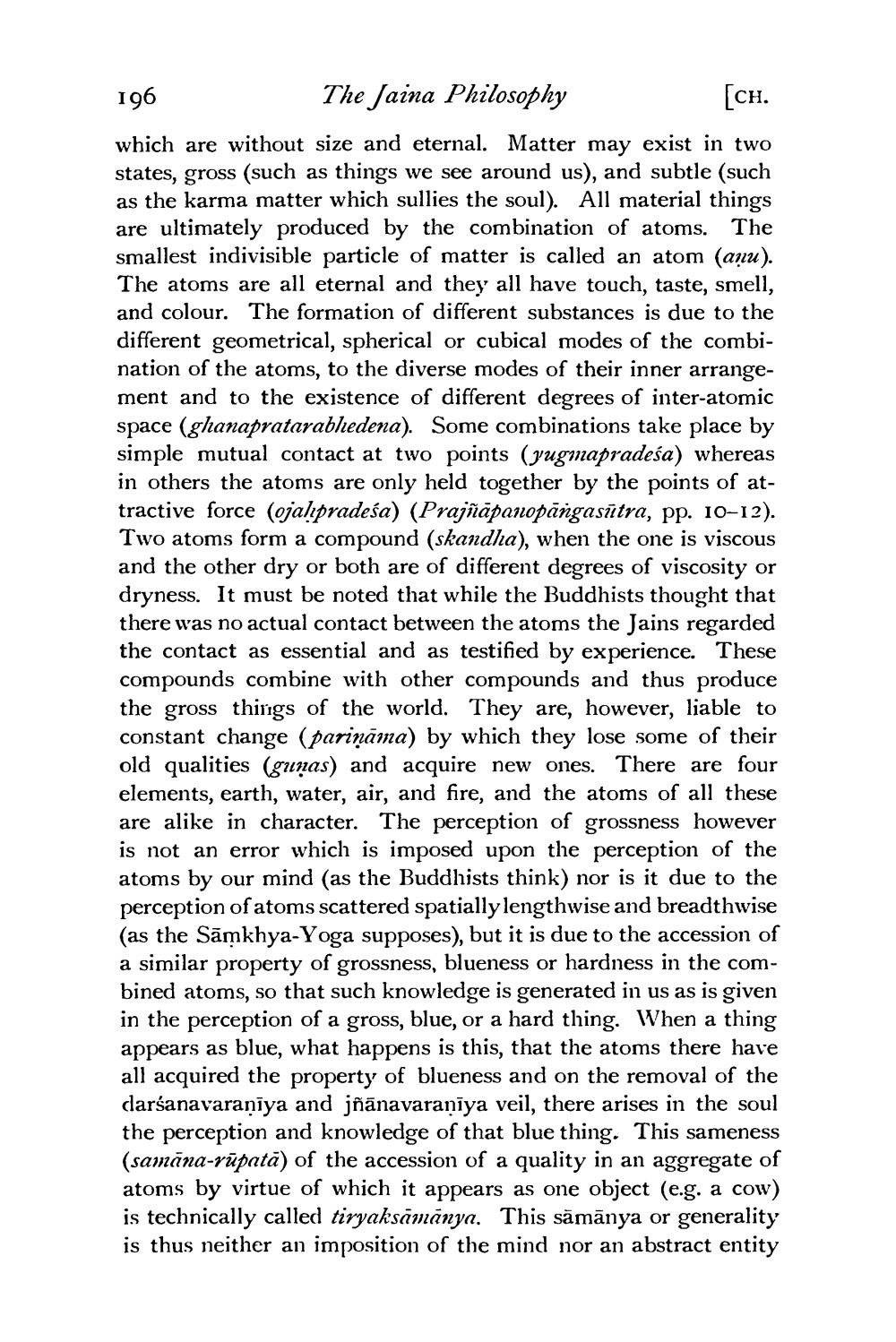________________
196
[CH.
The Jaina Philosophy which are without size and eternal. Matter may exist in two states, gross (such as things we see around us), and subtle (such as the karma matter which sullies the soul). All material things are ultimately produced by the combination of atoms. The smallest indivisible particle of matter is called an atom (aņu). The atoms are all eternal and they all have touch, taste, smell, and colour. The formation of different substances is due to the different geometrical, spherical or cubical modes of the combination of the atoms, to the diverse modes of their inner arrangement and to the existence of different degrees of inter-atomic space (ghanapratarabhedena). Some combinations take place by simple mutual contact at two points (yugmapradeśa) whereas in others the atoms are only held together by the points of attractive force (ojalpradeśa) (Prajñāpanopāngasūtra, pp. 10–12). Two atoms form a compound (skandha), when the one is viscous and the other dry or both are of different degrees of viscosity or dryness. It must be noted that while the Buddhists thought that there was no actual contact between the atoms the Jains regarded the contact as essential and as testified by experience. These compounds combine with other compounds and thus produce the gross things of the world. They are, however, liable to constant change (pariņāma) by which they lose some of their old qualities (gunas) and acquire new ones. There are four elements, earth, water, air, and fire, and the atoms of all these are alike in character. The perception of grossness however is not an error which is imposed upon the perception of the atoms by our mind (as the Buddhists think) nor is it due to the perception of atoms scattered spatially lengthwise and breadthwise (as the Sāmkhya-Yoga supposes), but it is due to the accession of a similar property of grossness, blueness or hardness in the combined atoms, so that such knowledge is generated in us as is given in the perception of a gross, blue, or a hard thing. When a thing appears as blue, what happens is this, that the atoms there have all acquired the property of blueness and on the removal of the darśanavaranīya and jñānavaranīya veil, there arises in the soul the perception and knowledge of that blue thing. This sameness (samāna-rūpata) of the accession of a quality in an aggregate of atoms by virtue of which it appears as one object (e.g. a cow) is technically called tiryaksāmánya. This sāmānya or generality is thus neither an imposition of the mind nor an abstract entity




